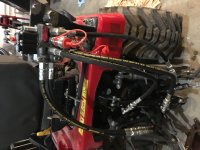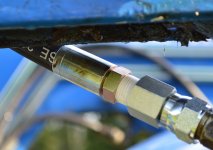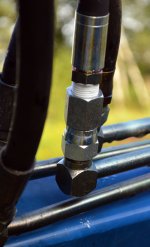How do you make NPT connections that don't leak? Too many of the ones I added recently leak. I have been using permatex liquid PTFE sealer.
First, if we are talking hydraulic systems, DO NOT use plumbing fittings.
Hydraulic fittings are steel not iron and although the plumbing fitting will connect, it can distort, crack and create very dangerous high pressure fluid leaks.
Pipe threads can be tapered or straight. Most people don't know of straight pipe threads.
NPS = National Pipe Straight
NPT = National Pipe Thread
Both NPT and NPS have the same thread angle, shape, and pitch (threads per inch). However, NPT threads are tapered and NPS threads are straight (parallel). Both threads have a 60ー included angle and have flat peaks and valleys.
Tapered Pipe Thread is commonly found on ends of pipe, nipples and fittings (i.e. couplings, elbows, tees, etc.). Note: Sharply angled threads are very critical to joint being tight with no leaks. Thread sealant or tape is typically required to complete the seal.
Straight Pipe Threads need a gasket or O-ring to create a seal.
While NPT and NPS threads will engage, they do not seal properly with each other.
Tell us more about the situation(s) were this recurring leak is happening, perhaps even a photo or two.
Properly selected and properly used pipe threads should not be leaking nor hard to get to seal.
Sometimes, owners unfamiliar with serious hydraulic systems, are trying to seal joints using pipe dope or teflon when in reality the joint it meant to be one metal surface seating on another metal surface.
Automotive hydraulic brake lines are an example of this metal to metal design where a double flare is used. Propane lines using flexible copper use a single flare to seat against a metal fitting with a tapered face.
These are all lessons I had to learn the hard way over many years so I understand the confusion that can occur.
Dave
M7040




